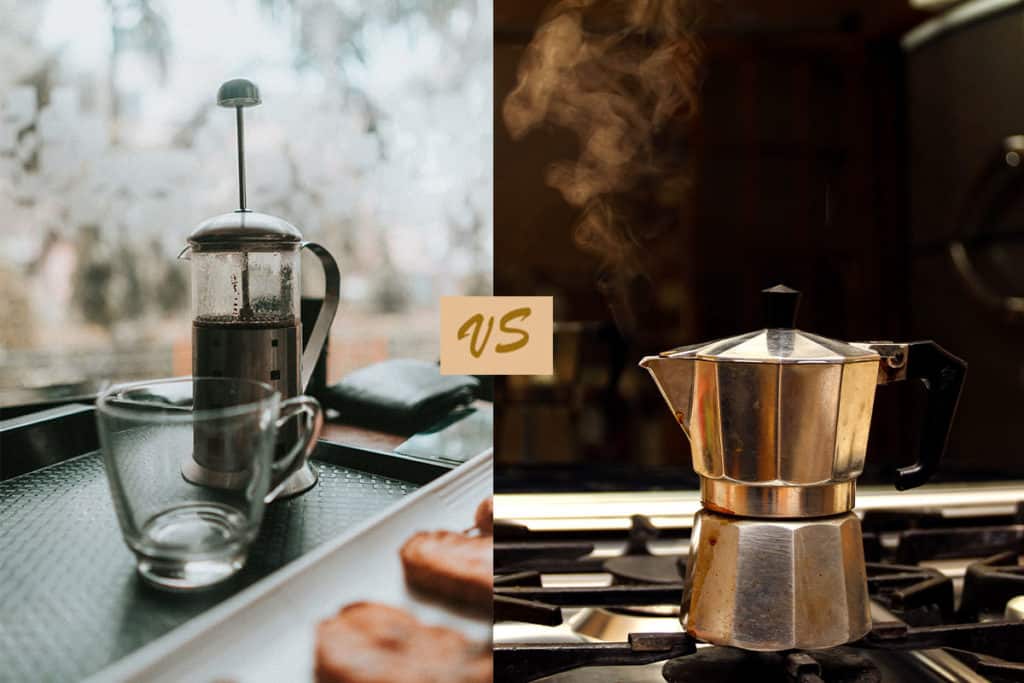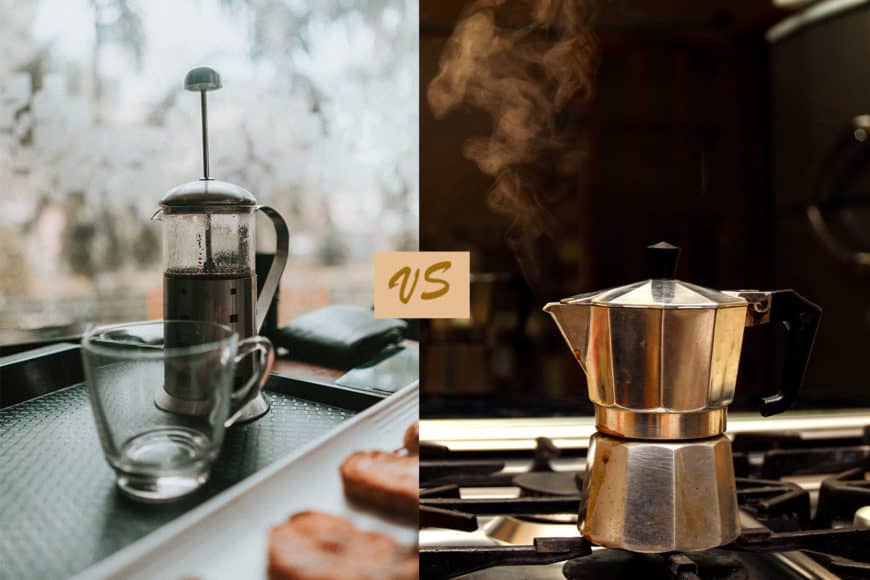
Coffee brewing is personal. French Press and Moka Pot are two manual methods that deliver bold, flavorful cups, but they work differently. I’ve dug into their histories, processes, and tastes to help you choose the one that fits your style. Let’s break down how these classics compare.
French Press: Smooth and Full-Bodied
History and Design
The French Press, patented in 1852 by Frenchmen Mayer and Delforge, got its start without a tight seal. Italians Calimani and Moneta improved it in 1929, and Faliero Bondanini’s 1958 “Chambord” design, now sold by Bodum, became iconic. It’s a cylinder—glass or stainless steel—with a plunger and mesh filter that presses grounds down.
Brewing Process
French Press uses immersion brewing. Mix coarse-ground coffee with hot water (195–205°F) and steep for 4 minutes. A common ratio is 1:16, like 27g coffee for 430ml water. Preheat the press, add grounds, pour half the water, stir after 30 seconds, add the rest, and wait. Press the plunger slowly and serve immediately to avoid bitter over-extraction. Coarse grounds reduce sludge, but some sediment adds texture.
Flavor Profile
You’ll get a rich, full-bodied cup with layered flavors. The mesh filter lets oils and fine particles through, bringing out nutty, chocolatey, or fruity notes. It’s great for medium roasts like Colombian or Ethiopian beans. Yields range from 3–12 cups, ideal for slow sipping or groups.
Pros and Cons
It’s beginner-friendly with control over water temperature, steep time, and ratio. Cleanup is messier—grounds cling to the filter, and glass models can break. It’s bulky, not travel-friendly. Environmentally, it’s solid: no paper filters, just reusable parts.
Moka Pot: Bold and Espresso-Like
History and Design
Alfonso Bialetti invented the Moka Pot in 1933, and it took off in the 1950s as a home espresso alternative. Named after Mocha, Yemen, a coffee trade hub, it’s a stovetop brewer with three chambers: water, grounds, and brewed coffee. Made of aluminum or stainless steel, it’s compact and tough. Bialetti still dominates production.
Brewing Process
Moka Pot uses pressure brewing. Fill the bottom with water (up to the valve), add finely ground coffee to the basket, and screw on the top. Heat on medium-low; steam pushes water through the grounds to the top. Use a 1:7 ratio—like 8g coffee for 60ml water for a 2-cup pot. Remove when coffee fills the top to avoid bitterness. It makes 1–12 small “demitasse” cups, like espresso shots.
Flavor Profile
Expect a strong, concentrated brew with a creamy texture, close to espresso but at 1–2 bars of pressure (vs. 8–10 for machines). It’s bold and sharp, perfect for dark roasts like Italian or Brazilian beans. It suits quick shots or milk-based drinks like lattes, with less nuance than French Press.
Pros and Cons
It takes practice—grind size, heat, and timing are key to avoid burnt coffee. It’s portable, great for camping, and cleanup is easy: rinse the parts. It’s eco-friendly, using no filters. But it’s less versatile, mainly for espresso-style coffee, and aluminum models don’t work on induction stoves.
Quick Comparison Chart
To make choosing easier, I’ve put together a chart comparing the French Press and Moka Pot on key factors like brew method, grind size, flavor, yield, and ease of use. Check it out to see which aligns with your coffee habits.
Choosing Your Brew
French Press is for those who love a heavy, aromatic cup and don’t mind a bit of sediment. It’s great for brewing for multiple people or experimenting with light-to-medium roasts. Moka Pot suits folks wanting a quick, intense shot. It’s ideal for solo drinkers or latte fans who want espresso without a machine. For portability, Moka Pot is the winner.
Price is similar: a Bodum 3-cup French Press or Bialetti 2-cup Moka Pot runs $15–$20, with premium models up to $90. Look at Le Creuset for French Press or Alessi for Moka Pot if you want flair.
Both methods changed home brewing—French Press with its rich, customizable cups, Moka Pot by bringing espresso to kitchens. Use fresh beans and precise measurements for the best results. Try coarse grinds with French Press for smoothness or fine grinds with Moka Pot for strength.

